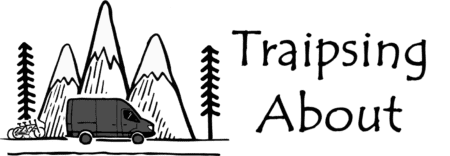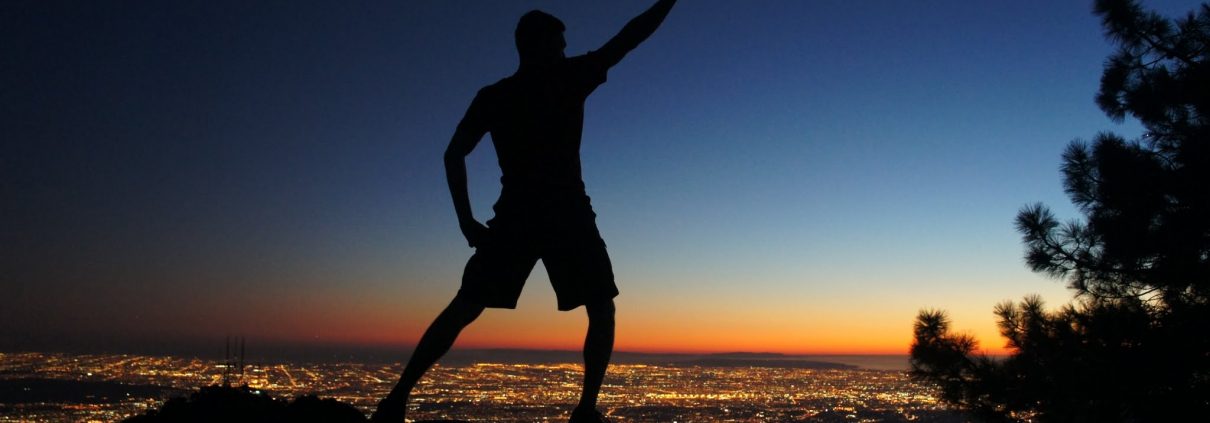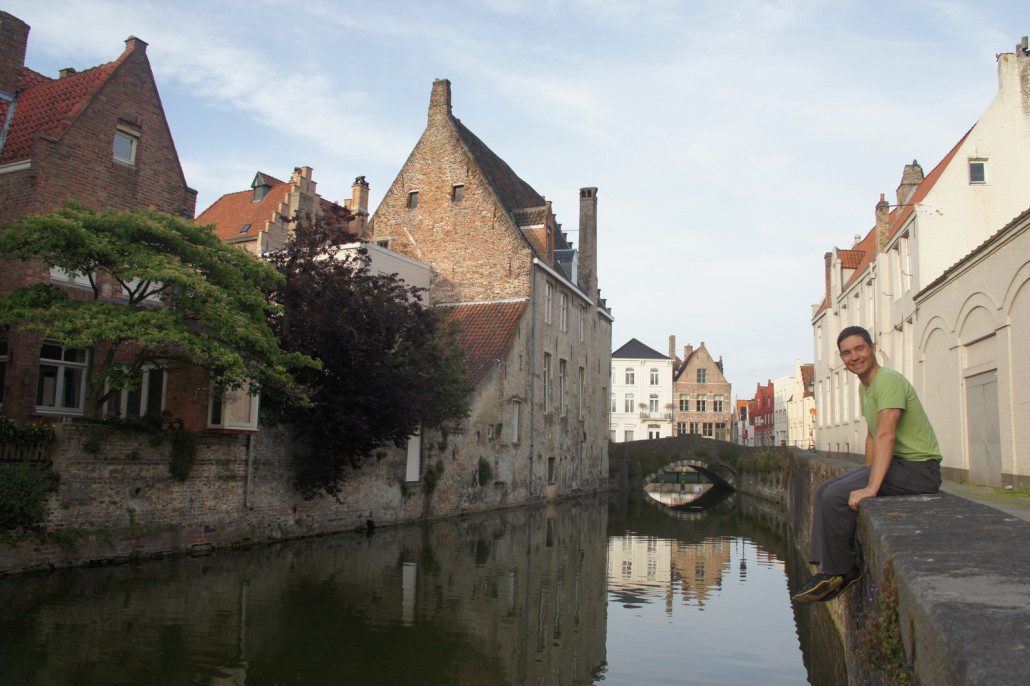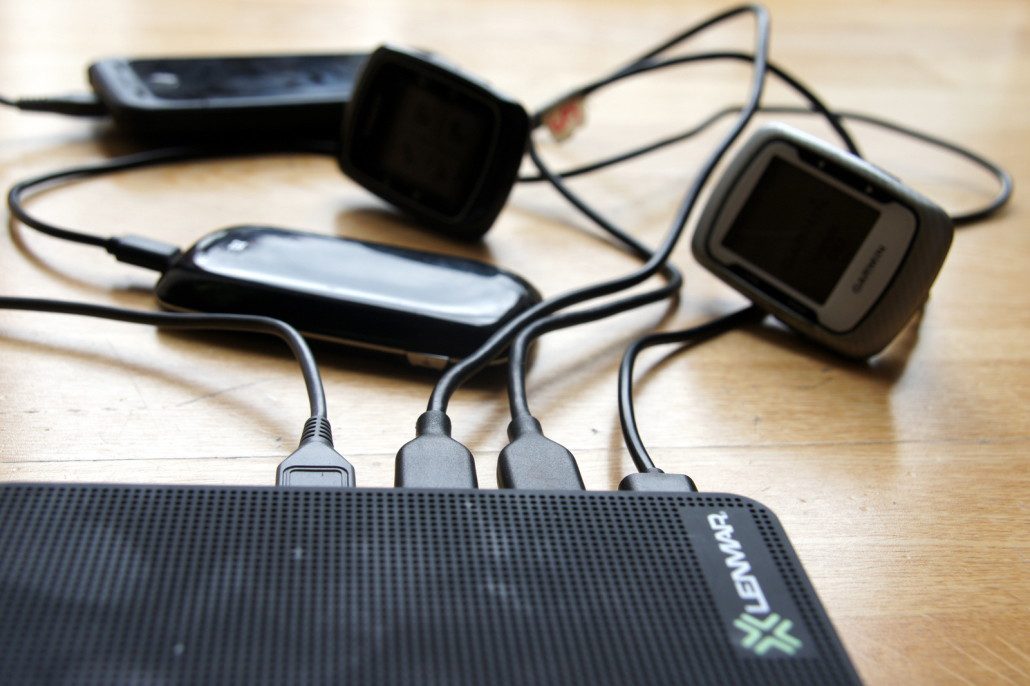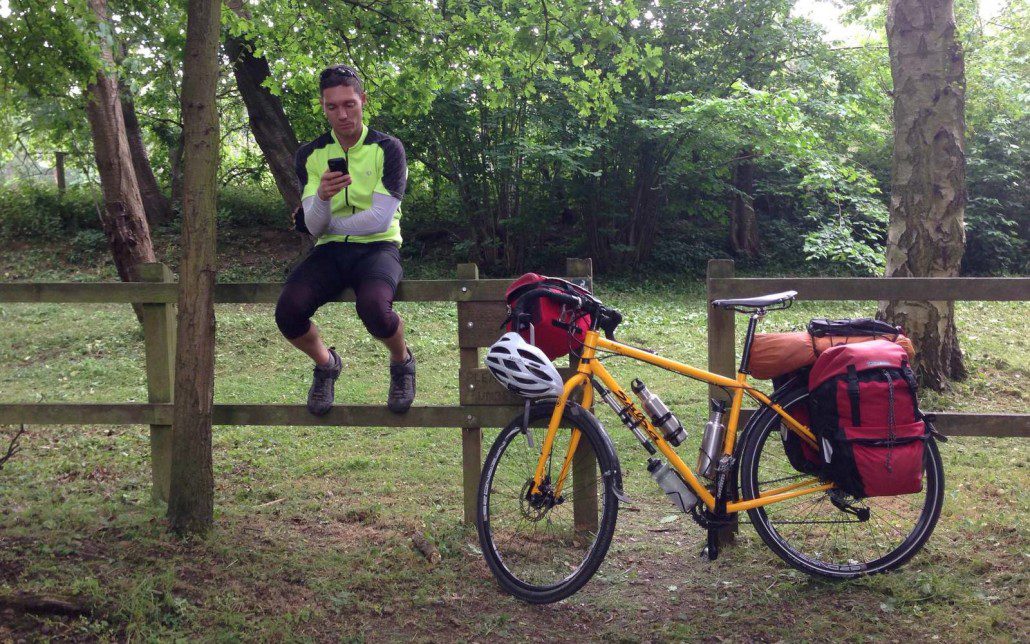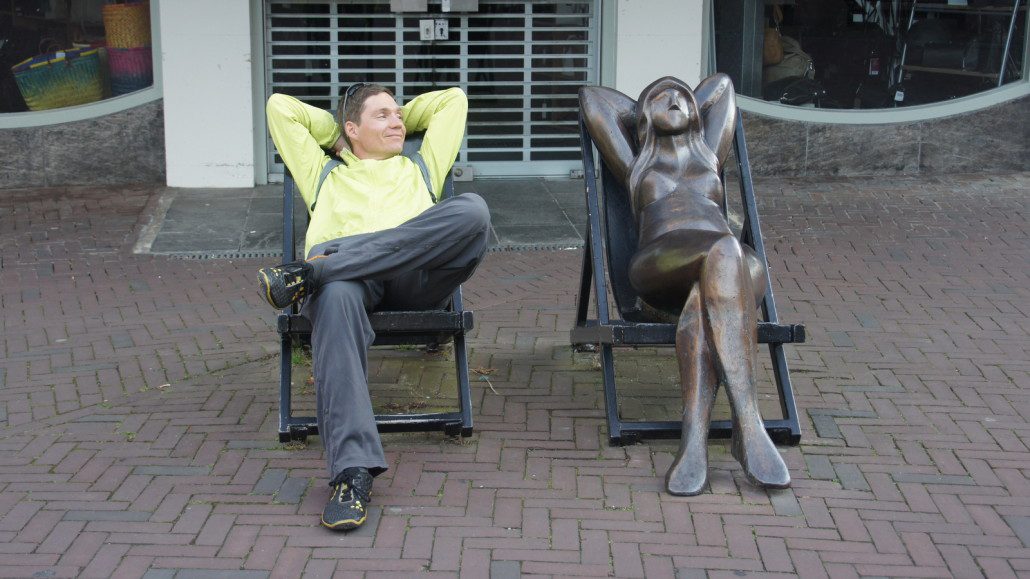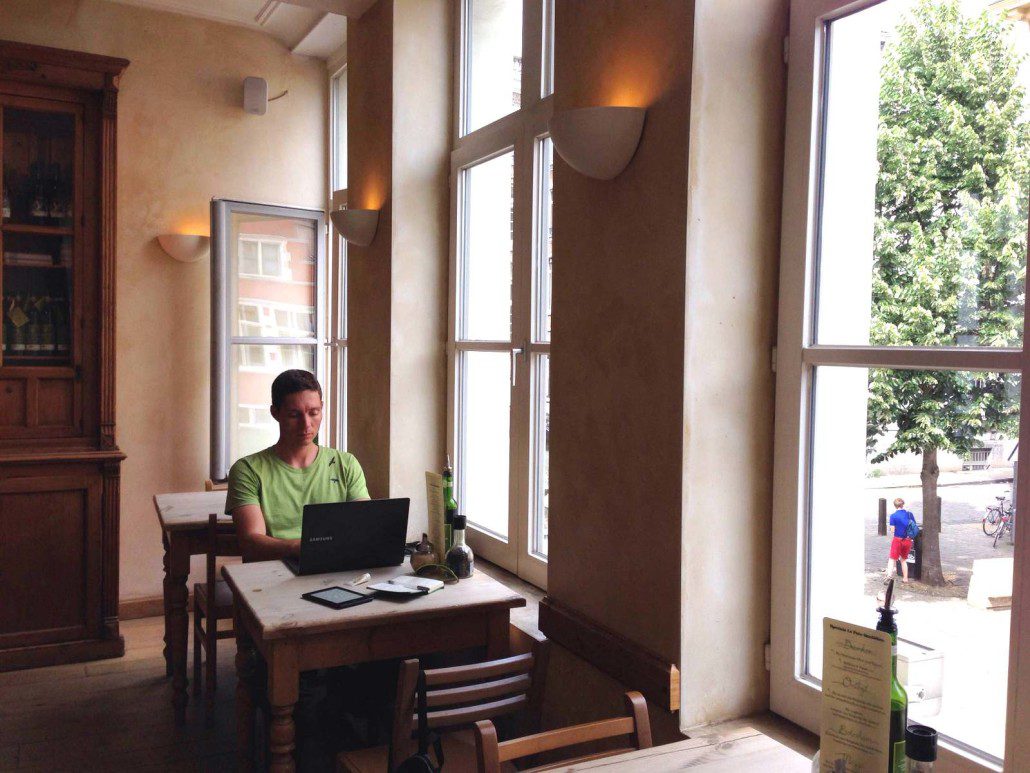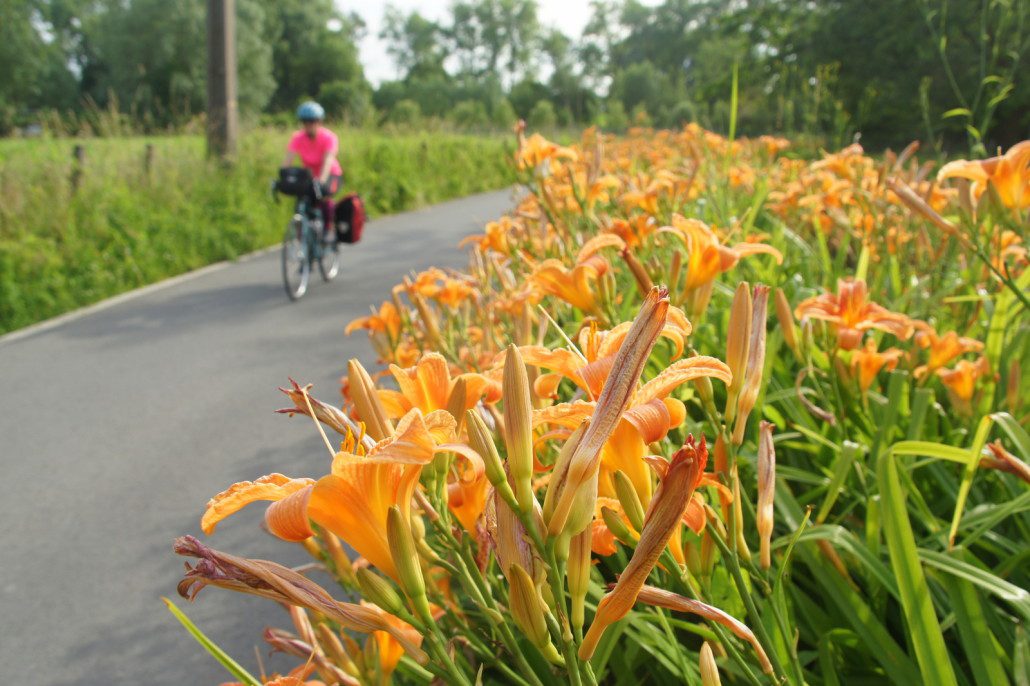Do You Want to Run a Business, Or Do You Just Hate Your Job?
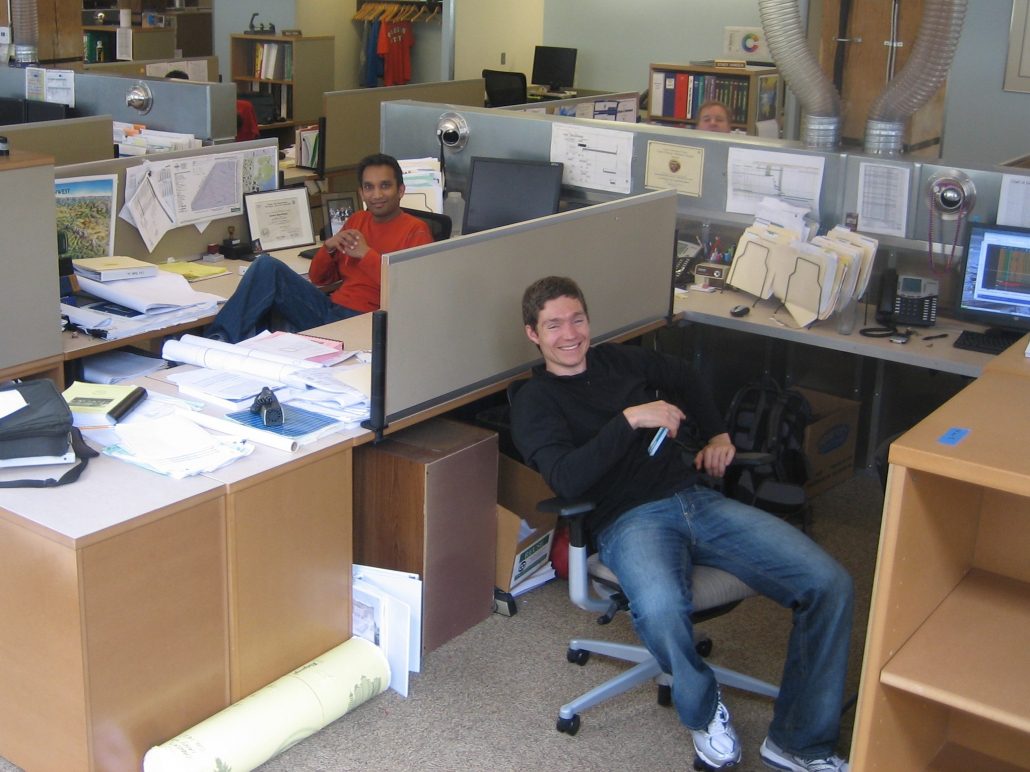
One week to go at the engineering office!
Ten years ago, I left my safe engineering job and swam into the dark waters of self-employment. No steady paychecks, no health insurance, no 401(k) matching. Just me, a degree I owed money on, and adult anchors like a mortgage. I’d taken zero business classes and didn’t know a P&L statement from a TPS report.
Coolly, a steely-eyed Texas Gunfighter, I assessed my unique position based on my skills, what I enjoyed doing, and what the world needed. Success soon followed, along with a shiny Camaro.
YEAH. FREAKING. RIGHT.
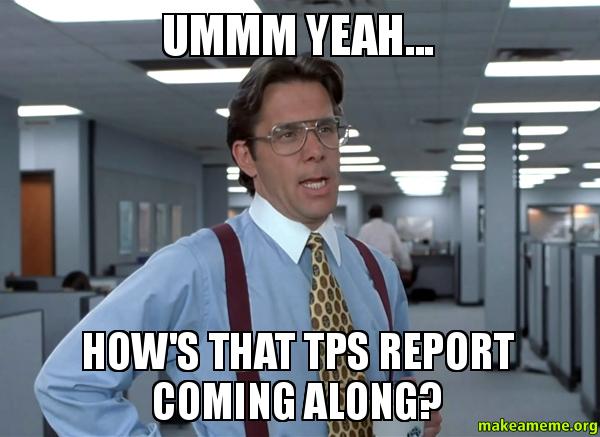
Another day in the trenches of Office Space.
If there’s one thing I’ve learned in 10 years of self-employment, it’s that nothing is easy, but the end result surrrre looks nice. Whenever I hear “you’re living the dream,” it always makes me think: do you want the uncertainty and headaches of building a business, all with no guarantee of success?
Along the way, I went from coveting the lifestyles of certain people in my life and in the media to realizing that, whoa, behind that curtain in Oz lies so much work, worry, and stress. Trade offs, always.
To dispel any notions of overnight riches, here is the real story of my journey. It’s full of doubt, mistakes, inch-by-inch progress and plenty of setbacks. YAY! I begin as a morose engineer and (eventually) claw uphill to a place where I run my own business and am lucky enough to have the time and money to choose how I spend my days…but first, shit gets real.
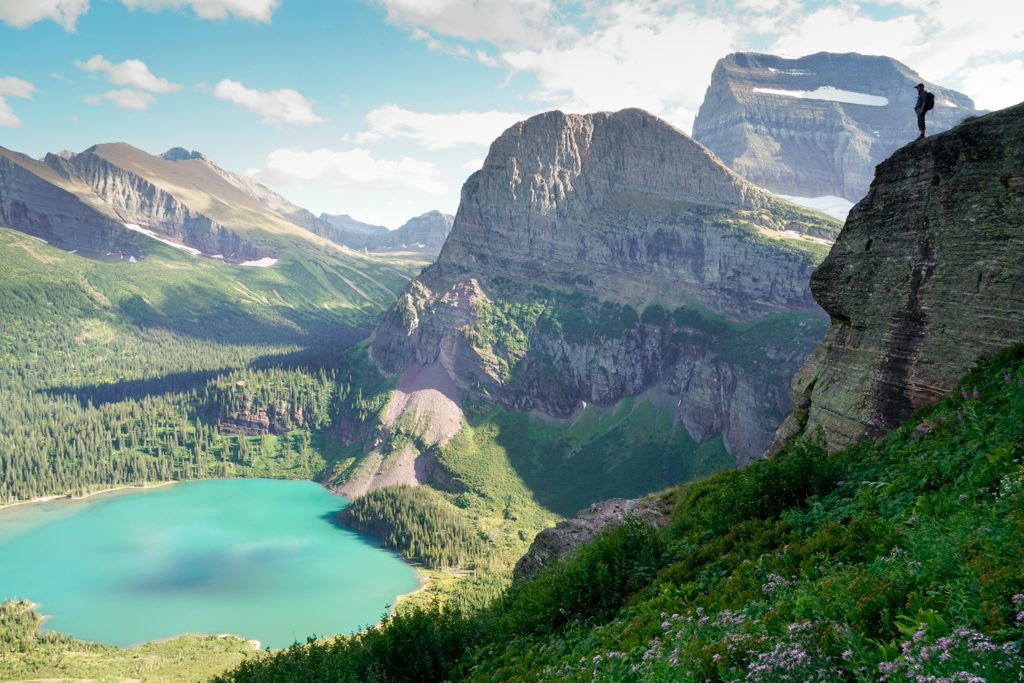
Choosing to spend my time in places like Glacier National Park!
The Unvarnished, Damn-That-Sucked-Sometimes Path
After college, I strap on a backpack and leave the country for the first time, exploring the world for a year. Small-town Idaho boy on the loose! (I live on savings from working multiple jobs through college.) I gain more self-reliance than during my four years of college, plus traveling is FAR more interesting than differential equations. Unfortunately, it doesn’t pay much…(Ok, anything.)
Along the way, I meet Chelsea in Prague and follow her to Portland. I get a full-time job as an engineer. Two months into the job, I’m miserable. Forlorn in my cubicle, I stare at my pictures of exploits in 35 countries. Two weeks off per year?! If I’m lucky, I only get 4,680 weeks in my entire life!
The entitled millennial in me wants freedom and money, RIGHT NOW. C’mon world, I’ve done nothing to earn it, but I want it. No, I deserve it.
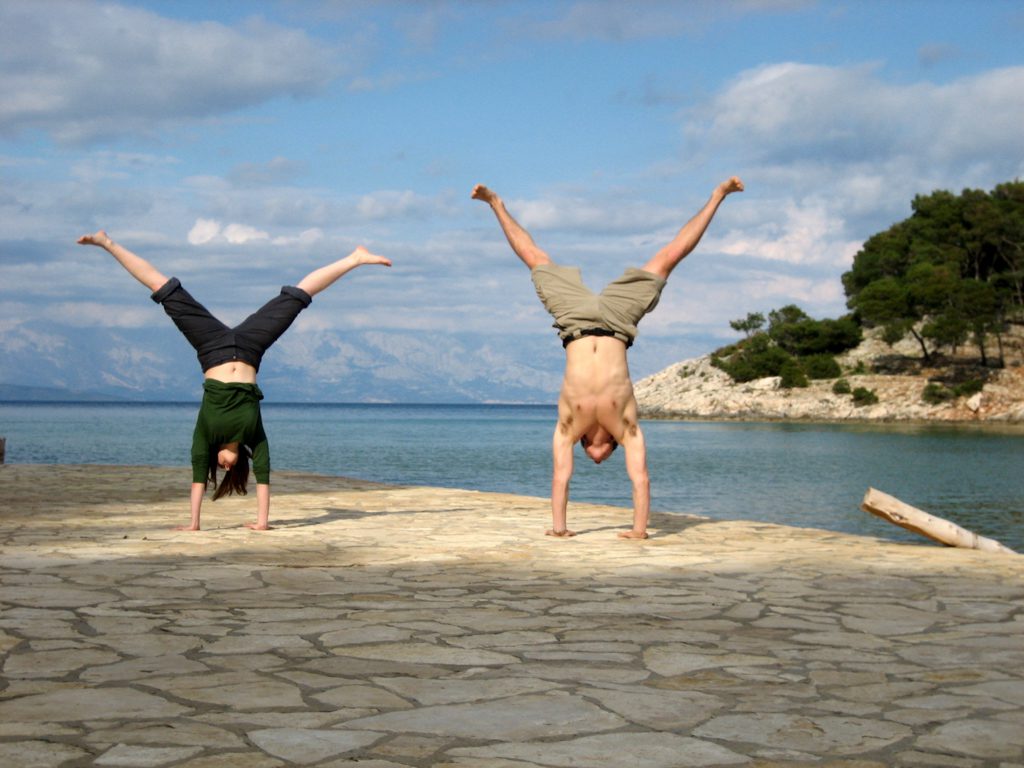
First date with Chelsea! If I can do a handstand, there’s no way working full time is necessary.
I start reading books like The Four-Hour Work Week and blogs about self-employment. (My reading list from those days is a study in cracking a code: real estate investment, entrepreneurship, The Millionaire Next Door.) The gears start whirring. I’m working long hours and downing Subway sandwiches at my desk. Meanwhile, Chelsea is starting a real estate career. Supportive partner to the core, she says, “Hey, talk to James, the finance guy in my office.”
James advises me to keep my sweet, secure engineering job. I’m earning $55k/year right out of college, far more than I’ve ever made. It’s 2007 and the housing market is teetering and everyone in the industry can feel it.
Advice be damned! I get a lending license. I have zero finance training, but I want to become the Green Lender, the sustainability finance dude.

I’d totally trust this guy with my money! I mean c’mon, he’s got a green shirt, rides a fixed gear bike and has big hair. #trustworthy
Friends are my first marks; somehow, I don’t screw things up TOO badly. I do a deal here or there on the side for a year, focusing on my own personal projects on my computer’s second monitor. (Alt-Tabbers out there, let’s just say I was quick on the draw.)
The condo market in Portland peaks. We’re sage investors, so we buy a condo. “We’ll flip this and buy a house next year,” we tell ourselves, toasting our good fortune. The condo drops 40% in value. #realestategeniuses
Mid-2008, I leave my engineering job. Adjustable rate mortgages explode like time bombs, flak spraying the markets. Whatever – I’m SO stoked to quit.
The market crashes. There are approximately zero point zero clients buying homes. Whaaaat am I gonna doooo?
I’m no dummy, so I focus on core business development strategies: rock climbing and biking. For months, I avoid doing the work to get started, living on savings. Road trips to beautiful places STILL don’t pay much, it turns out…
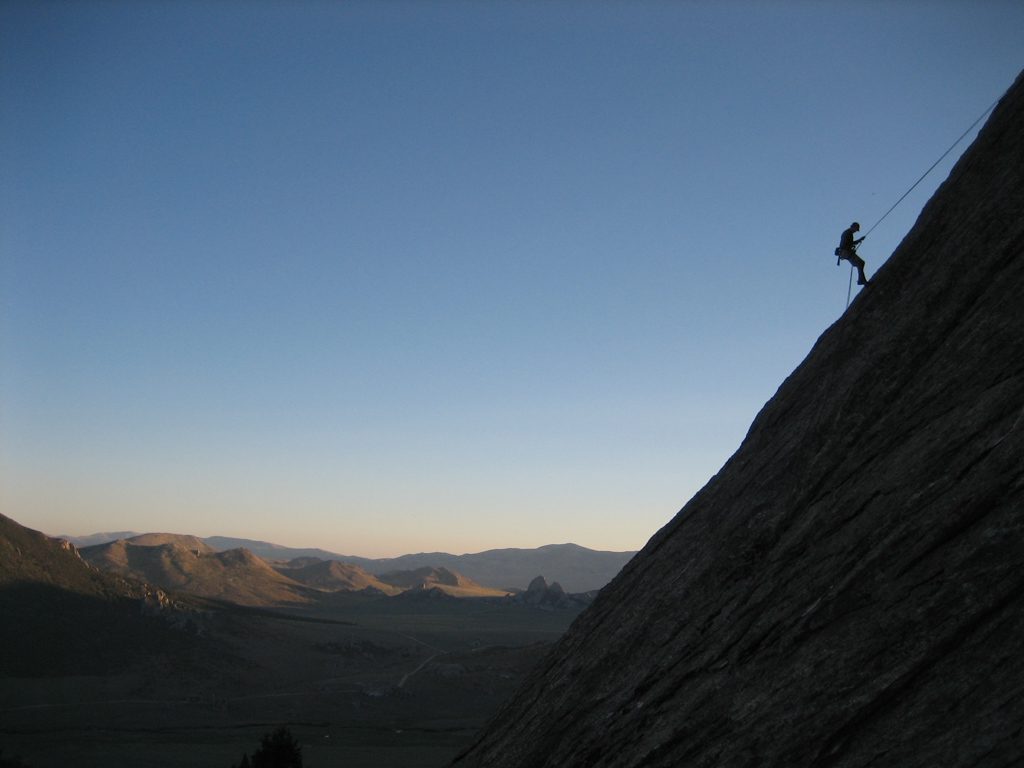
Thinking deeply about business development in the City of Rocks.
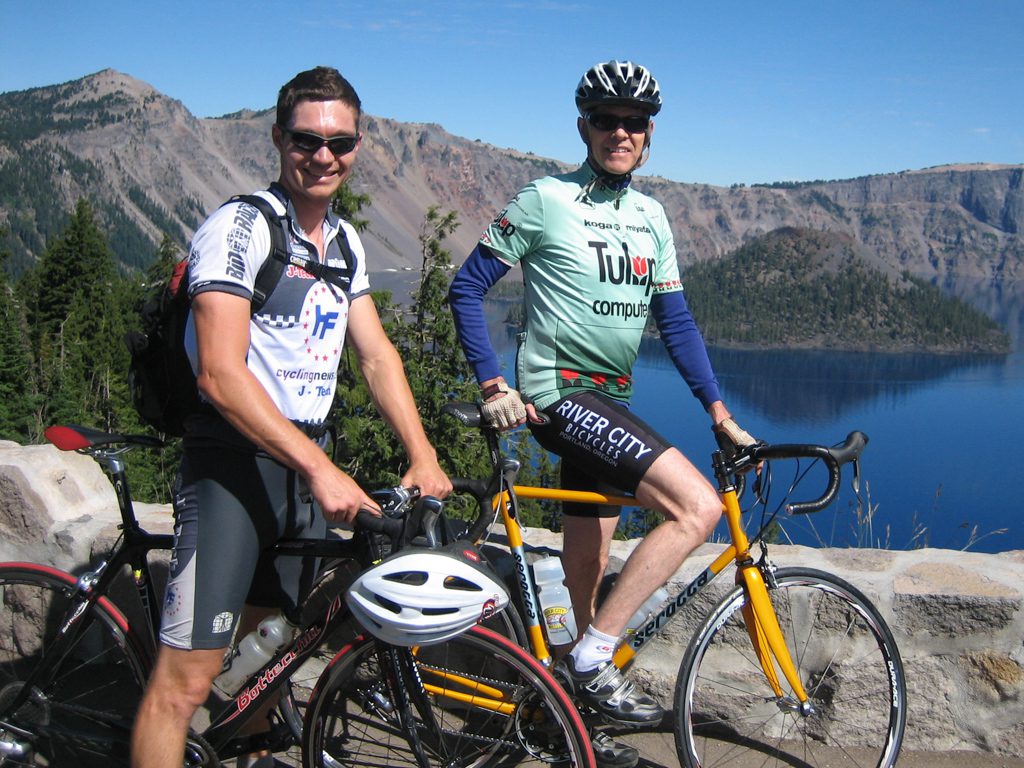
Hard at work on my business plan with my friend Don on a ride around Crater Lake.
A Journey to the Dark Side of Business
A college roommate and I are both casting about for business ideas. We start a tech consulting business (neither of us are qualified). One of our favorite biz names includes “Techasaurus Rex.” (Sigh.)
We shutter T-Rex when my roommate finds a multi-level marketing (MLM) business called LocalAdLink, which aims to compete with Google AdWords. With a failed MLM in college, surely I’ve learned there is no such thing as easy money and that MLMs are shady and sharky.
I jump into the MLM full-force. Craigslist posts, recruiting, “ground-level opportunity…” All the bullshit. We make a few dollars, mostly from other people joining. (Rule #1 about most MLMs: the product is secondary. It’s all about recruiting people to sell the product for you, a pyramid paying people at the top. Gimme a P, gimme an O…PONZI SCHEME!)
After a month or so of this BS, my biz partner finds another, shinier “opportunity” called Lightyear Wireless. It’s another MLM. Chelsea, the far more intuitive one in our partnership, sees right through it. No way am I jumping into this one – c’mon Dakota. Dean’s list engineering student, world traveler… Common sense says that…
Headlong, I dive into recruiting for Lightyear. This one goes well; recruiting is easier, money to be made. Ground floor opportunity again, baby! (It’s always ground floor.) It’s a cold winter and I’m working in our uninsulated condo. Curled at my feet is an archaic cat Chelsea rescued from the street. Her name is Annie and she’s the sweetest, most decrepit kitty ever.
Annie spends the last days of her life asleep by the space heater, croaking out meows for a pat. Her waning moments parallel the sunsetting of my MLM days. I read a professor’s article about MLMs and email him. He confirms my theory that I’m not actually putting efforts into a real business. That small nudge is all it takes.
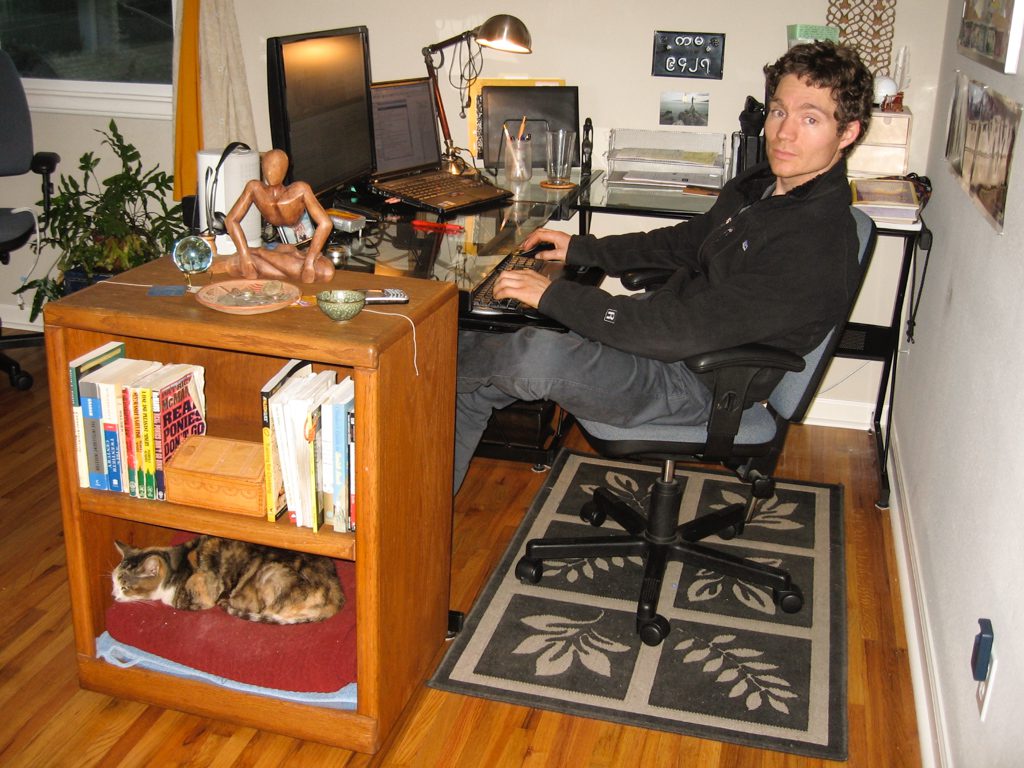
Me and old Annie hanging out. (Side note: No way I’ve ever had so many pics of me sitting in office chairs in one blog!)
The Only Way to Make Money is to Create Value
I realize there is no easy way to make money without hard work and that it is time to buckle down and create value. It’s a hard lesson, and I feel stupid and embarrassed. Why don’t they teach these lessons in school instead of trigonometry?! I’m also lucky to only waste a few months of my life on MLM scams. To anyone considering them, here’s my odious advice: move on immediately.
My timing is unreal. The housing market collapses and the government rescues big banks. Not to worry: all my old engineering colleagues are pulling down great money. None of them will lose their jobs in the teeth of the incoming recession. (“How’s the new biz, Dakota?”) Remind me why my dumbass Millennial, want-the-world-on-a-silver-platter self left a solid, respectable job with upward mobility?
I scattershot my approach in mid-2009: selling search engine optimization, hawking website design for a company, learning web design myself and building niche websites, joining a couple teams pitching grants in the sustainability marketing realm, and teaching a class on sustainability at a local college. (Funny enough, I’d forgotten ALL of these until going through Gmail for this blog!)
My shifting intentions force me to refocus and buckle down on my real estate finance business. I brainstorm ideas about green building and sustainability, reach out to build relationships, and finagle presentations to Realtors who are listing efficient, green homes. The federal government offers a first-time homebuyer tax credit to rekindle the swooning economy and people start buying homes again…but I still have zero clients.
I’m freaking out. My savings are dwindling and my meager stock investments are cratering. I’m a saver by nature and hate living without a safety net. That cubicle and monthly paycheck sound miiiiighty fine. Free lunches and a Christmas bonus? Sign me up. (I’m in The Dip, as Seth Godin calls it.)
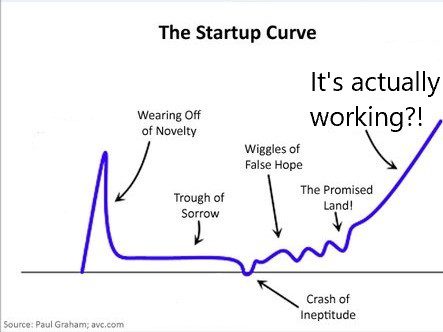
I’m somewhere in the trough of sorrow/crash of ineptitude…
Changing Tides!
Momentum! Chelsea refers me some clients and I build relationships with Realtors. Two of them are a progressive team that sense opportunity with a review platform, Yelp. I’m intrigued (and desperate).
Referrals trickle in. I finally start making some money. Not a lot, and it feels unstable, shaky. Still, we’re frugal and it’s enough to cover my expenses. (Mostly because I’m not into the expensive sport of mountain biking yet.)
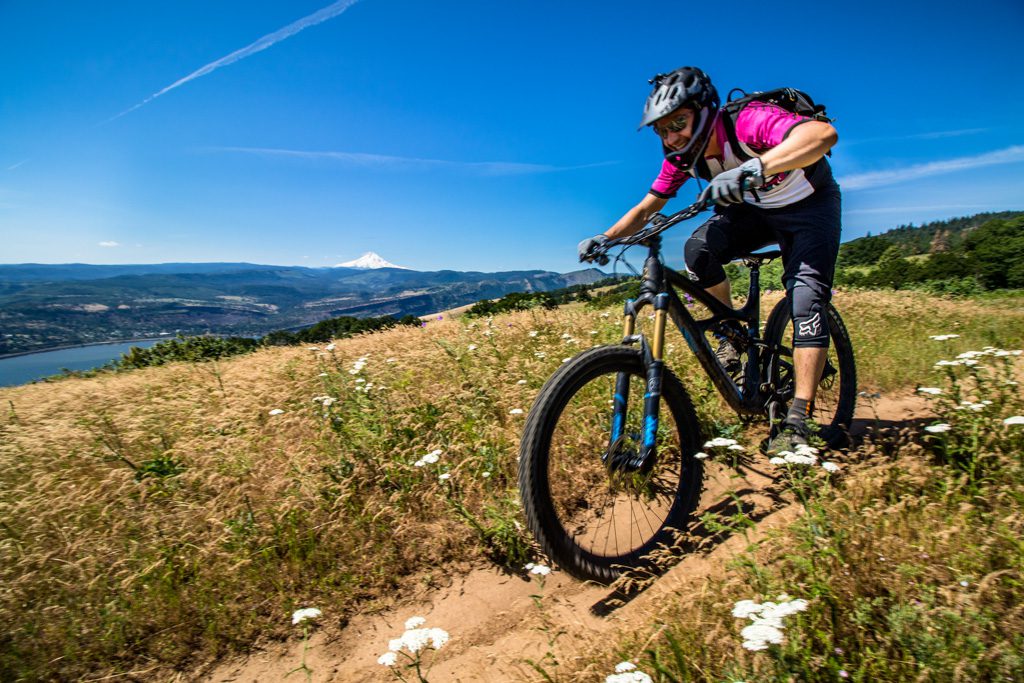
Ohhhh but I WILL be into this sport… (Photo: the talented Scott Rokis.)
So much trial and error. Does this marketing work? Can I offer classes about technology and a paper-free office and get referrals? (Yes.) Some business relationships blossom, others dead end, time wasted for no pay.
I’m learning the hard way that efficiency and effectiveness are different beasts. I can spend all day working efficiently on things that don’t deliver revenue! (“Maybe I’ll sort my contacts into groups and delete old archived emails.”)
I’m working hard, harder than I EVER did as an engineer, and the payoff is uncertain at best. Still, Yelp reviews are coming in and I’m seeing a glimmer of hope. (Essentialism is a great book that helped me focus on what mattered.)
Curveballs, Always Curveballs
I receive a job offer that is too good to refuse and become the Sustainable Finance Director for a local nonprofit. I’m tasked with developing relationships with organizations to push forward the green building market. Do I land my fledgling mortgage business? Hell. No. I double down and work harder.
Adding fuel to the fire, I commit to a budget of $200 per month to invite engaging, curious business professionals out to lunch or coffee. I build my network and meet dozens of driven people who are creating and contributing to what makes Portland a fantastic city. (The book Never Eat Alone is a significant influence on my approach.)
For 1.5 years (early 2010 to fall 2011), I’m pinning it, full throttle. Flights all over the country presenting on sustainable finance, meetings, work work work. My mind never rests, stress cascading off me in waves. I’m thinking about work from eyes open to head on the pillow. I lie awake at night thinking over difficult conversations, tactics, possibilities, risks. I’m so much fun to hang out with…
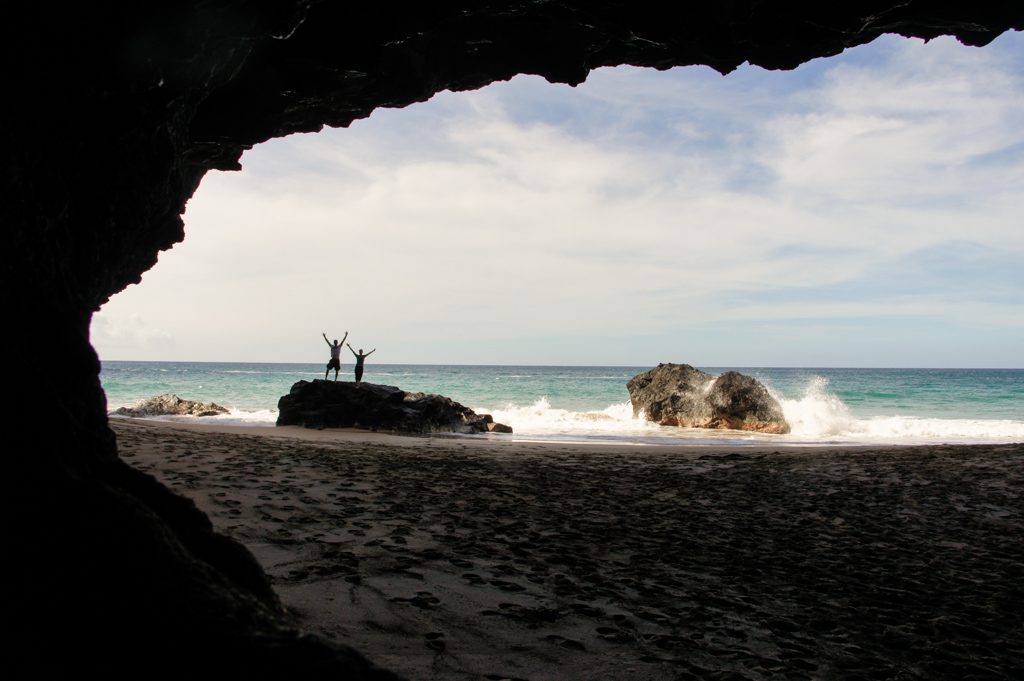
Kauai vacation (to elope!) in 2011. Not shown: me working half of my freeeeaking wedding trip.
It’s an exciting, exhausting, unsustainable pace. Only my morning bike commute, lunch runs and the climbing gym keep me sane. Chelsea is also working nutso hours on her business, so our time together is limited. Trail mix dinners over the kitchen counter, yum.
Breaking point. I have to choose. (Choose Yourself James Altucher says!) I leave the nonprofit and invest in my own business in fall of 2011.
Own or Be Owned by A Business
Positive reviews of my work on Yelp continue to drive new clients my way. My work is gaining steam and 2011/2012 are insanity. I’m pulled in 700 different directions. In no way do I own my business; it owns me.
Chelsea and I get married. Even though we don’t have kids and her business is booming, she leaves paid work, opting to support my fledgling business and focus on creating an awesome life for us . (Check out Radical Homemakers.)
We joke that she’s our Ambassador of Fun, but more accurate is that she’s consciously making our lives well-rounded and deep through community building, travel planning, and (eventually) a focus on veganism. To this day, it’s the best decision we’ve made to improve our quality of life, forge new paths and ways of thinking.
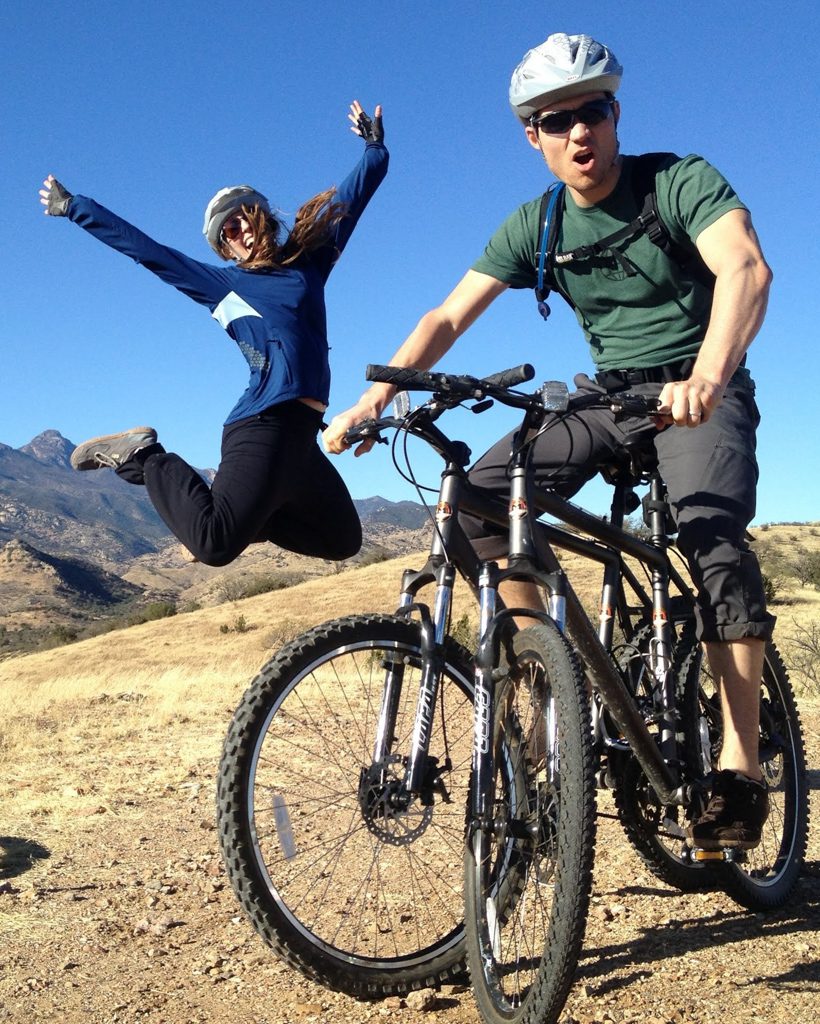
Chelsea brings the fun while I rethink cycling and ride two rental bikes in Arizona.
In many ways, we have it so, SO good. However, like a dam overloaded while cranking out electricity, the cracks are starting to show. I’m stressed and edgy. Is this effort worth it? We start dreaming about living smaller and dig into the tiny living movement. What if we live in a mother-in-law unit and rent out the main house? I could dial back my work and stop thinking about money all the time. Wait, wasn’t that the plan four years ago?
We take a roadtrip in fall of 2012 to “decompress.” I spend the entire time working and more stressed. (Where’s a wifi signal?! We’re losing reception!) It. Is. Miserable. We spy a Vanagon on that trip and almost buy it on a whim. Instead, we start researching camper vans. Four months later, we spring for a new Sprinter van. A new chapter opens.
Two contract employees I rely on are yanked out from under me. I’m terrified, but make the leap and hire my first full-time employees. (My guiding principles stem from the book Let My People Go Surfing by the founder of Patagonia.)
We’re in contract on a new house. WAIT. I realize I want to break free, to roam, to feel that footloose feeling of travel from my days in New Zealand, Russia, Laos…
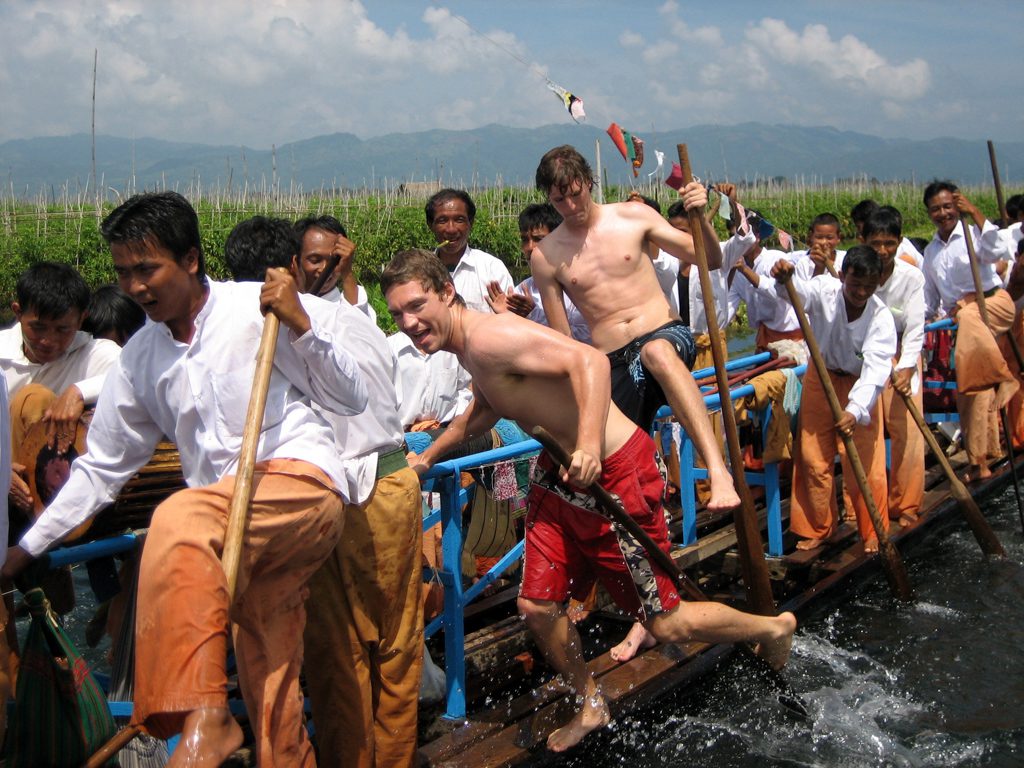
An all-time travel moment: we switch boats on Inle Lake (Myanmar) and learn how to paddle like the locals.
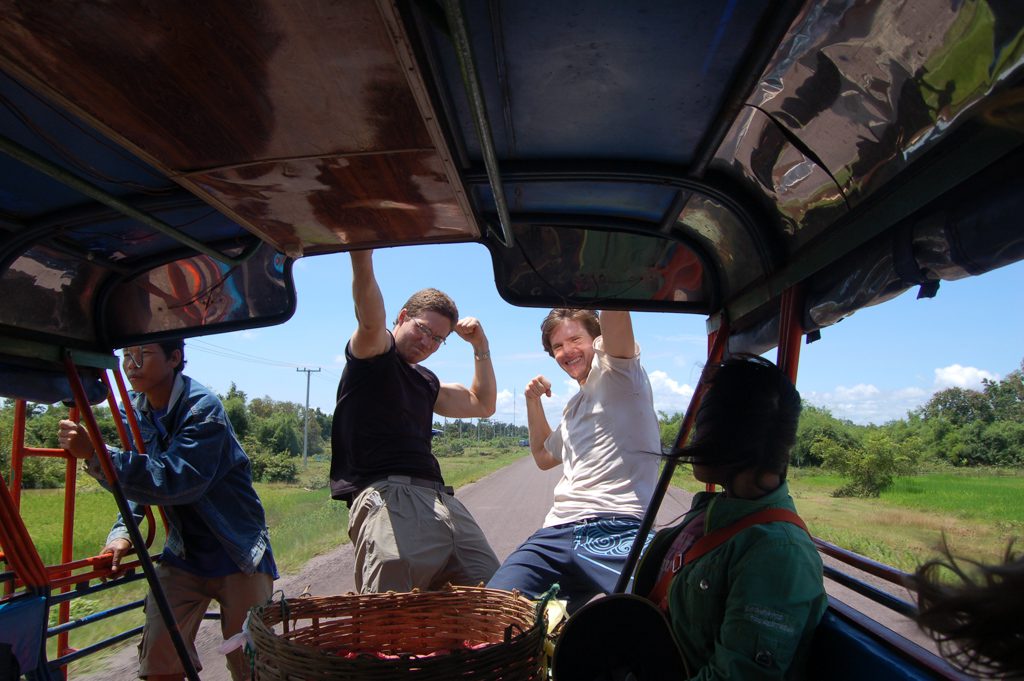
Hanging off the back of a tuktuk in Laos in 2006 with my buddy Eric!
The Life Pivot
We turn on our heels and hatch a new plan: a 4-month van trip from Portland to San Diego. I focus on finishing our van buildout, of planning and execution with freeeeedom as the goal. At the end of 2013, we drop our kitty Oliver off at the in-laws and head south.
The van doesn’t have any running water and there aren’t any interior lights. We are ecstatic. Nature and creative time fill our days. Chelsea and I spend more quality time together than we have in years. We decide four months is wayyyy too short a trip…
I’m working remotely. It’s flexible, but not enough. We crunch some numbers and make another leap: I’ll refer all my clients to my staff. The goal: trade time for money. It’s time to own my business, not be owned.
I’m terrified it will fail, that my hard-fought efforts to build a business will crumble. The risk feels worth the potential reward – what’s the best that could happen? I make the leap.
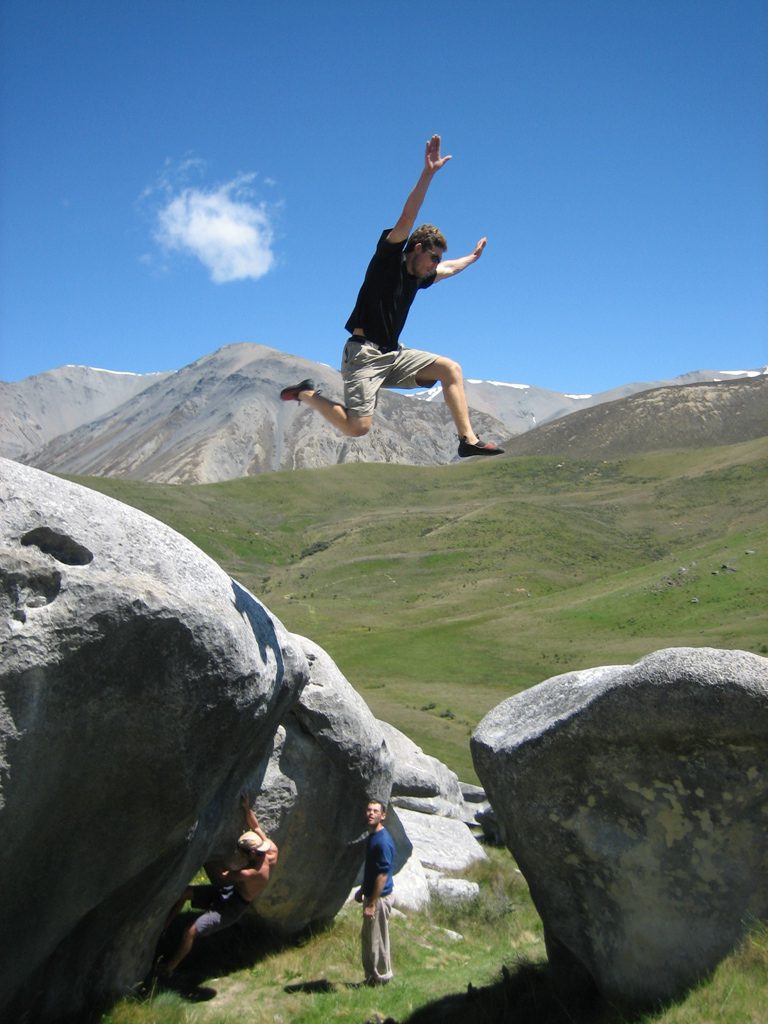
Sometimes you’ve just gotta do it!
It works. Somehow. There are new headaches and surprises with the people I hire to cover my client load, but also mental space. Less money, more time. As a business owner, at some point hiring and delegation are key if you want to pursue other passions. The timing is never right. Scary. And also life-changing.
We celebrate the new flexibility with a bike tour 4,100 miles across the U.S. I only work a few hours per week on the tour. The decision to leave my engineering job is finally vindicated. This is the reason I started a business, not just to make money!
Two more years of travel follows, followed by the ability to choose where we want to live (Bend!) and sculpt our lives along lines true to our values and priorities. It’s never perfect – I’m still a Millennial, dammit – but the effort feels worth it.
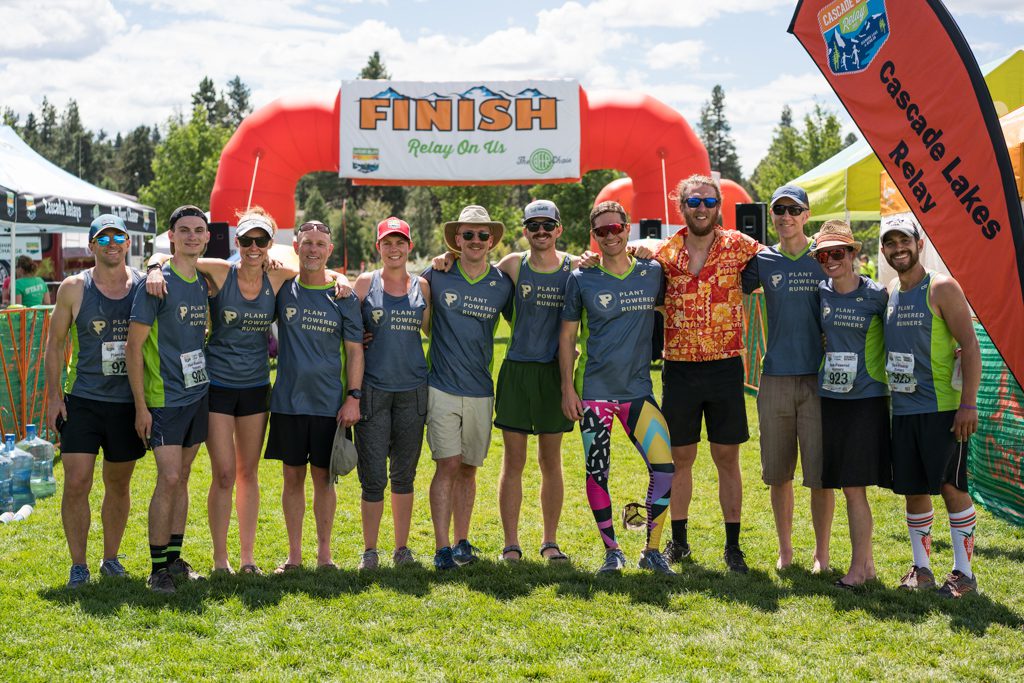
A strong community AND outdoor fun: the perfect mix.
The Journey Continues
Almost five years from our initial launch in the van and a decade out of the cubicle, I’d forgotten many of these trials. Writing this was a stark reminder of the truth: creating a business is HARD work, often filled with drudgery, dead ends and stress.
What seemed like terrible timing at the outset was actually luck, since I started in the murk of a recession and shot out on the upswing with a lean, nimble business. Even now, there’s no certainty of success. With the housing and stock market overheated again, who knows what will happen! Whatever. I’m confident in our ability to adapt, learn, live frugally, and create income if needed.
One thing’s for sure: I’m glad I didn’t buy a Camaro. I’d rather own a camper van.
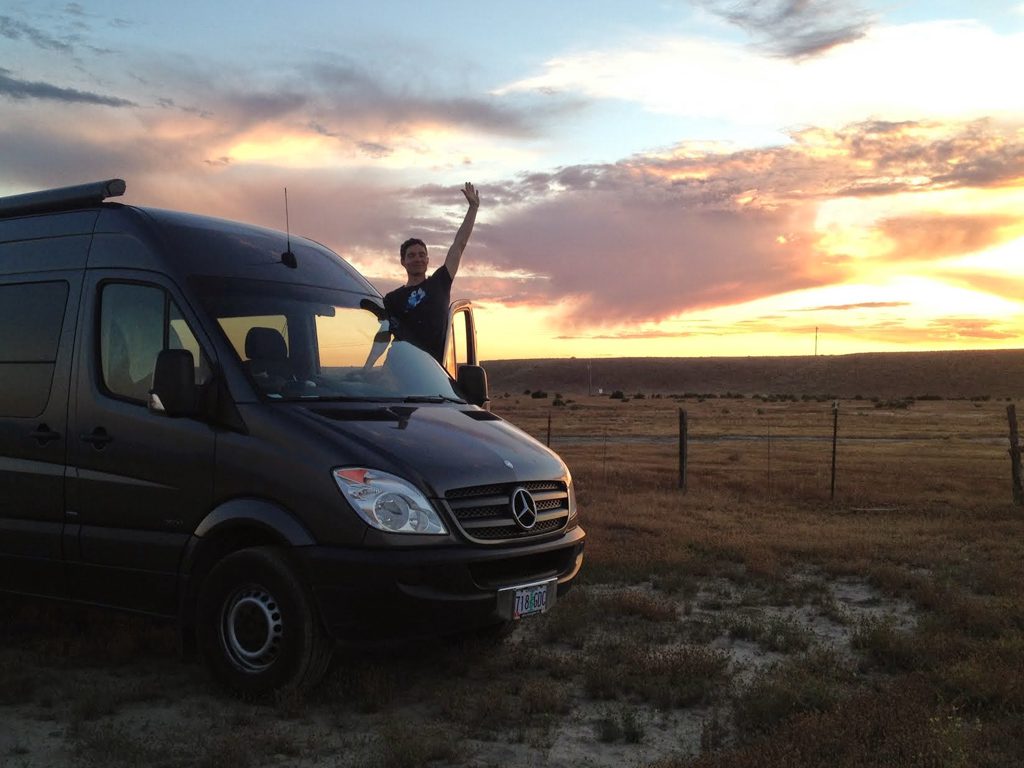
YEEEHAW TO VANS AND SELF-EMPLOYMENT!
